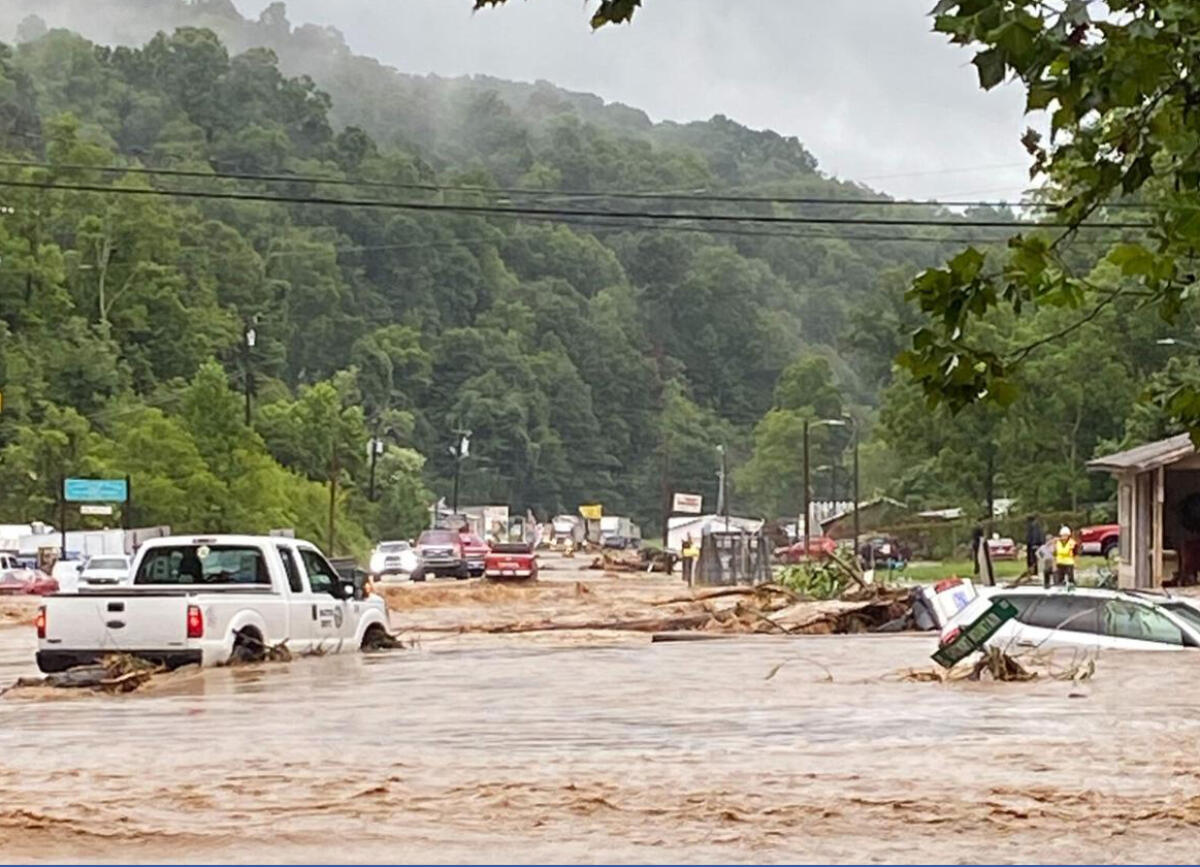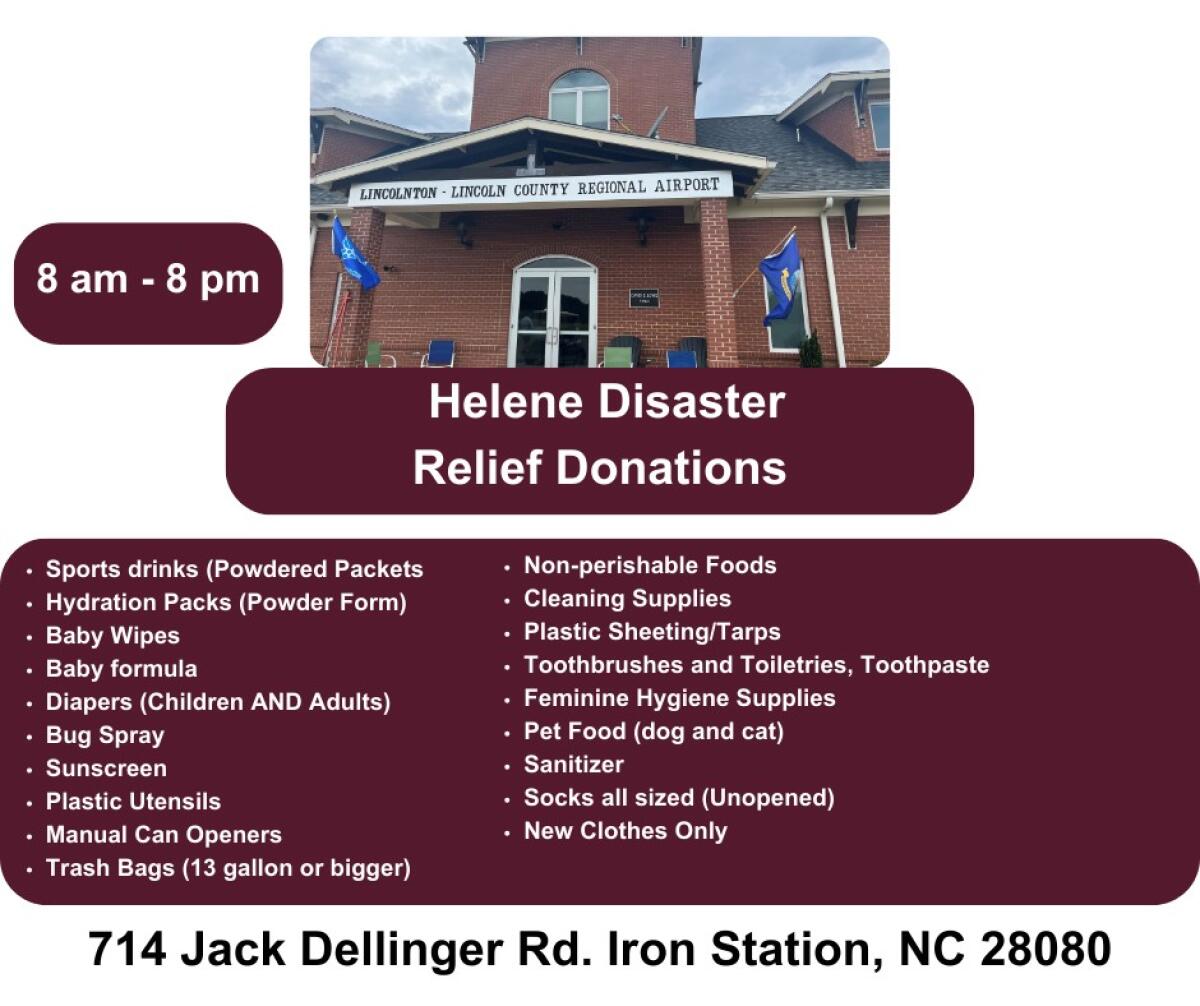- Monday, 29 December 2025
- Have a HOT TIP? Call 704-276-6587 or E-mail us At LH@LincolnHerald.com
Helene’s Aftermath Continues To Wreak Havoc
Multiple streets, roads remain closed; floodwaters still factor

(Photo Courtesy McDowell News)
Three days after Helene hit the South, the hurricane and its aftermath form a nightmare that just won’t go away.
According to multiple news sources, the killer storm has left a staggering trail of devastation, racking up untold billions of dollars in damage and killing some 102 people across Florida, Georgia and the Carolinas. At nearly 40, North Carolina’s death toll is the highest. Thirty people have been reported dead in Asheville alone, according to Fox News. There are dozens of people yet unaccounted for, and many pets and other animals have lost their lives as well. Heartbreaking tales have emerged of families and their cats and dogs seeking shelter in their attics, only to drown as floodwaters have risen beyond rooftop levels in many communities. More than four million people have lost power due to crippling electrical outages.
Floods and mudslides pose a twin-headed leading danger throughout the Southeast. In eastern Tennessee, a bridge collapsed (the Kisner Bridge, over the Nolichucky River in Green County). The nearby Nolichucky Dam nearly failed, according to The Memphis Commercial Appeal.

At left, Lake Lure’s famed flowering bridge, built in 1925, was destroyed last week. It was washed away in the wee hours of Friday morning when the French Broad River’s floodwaters, laden with heavy and dangerous débris, slammed into it. (Photo Courtesy Thomas Lark)
And here in the Old North State, the town of Chimney Rock has been virtually destroyed. Its sister town of Lake Lure, located just over the French Broad River, was also devastated. Lake Lure’s famed flowering bridge, built in 1925, was washed away in the wee hours of Friday morning when the river’s floodwaters, laden with heavy and dangerous débris, slammed into it with massively destructive force.
Also in North Carolina, entire towns and cities have been cut off from the rest of the world, with telephone and Internet service being down as well. Asheville, a major city of nearly 100,000 residents, has been cut off for days and remains largely accessible only by air. Emergency supplies are being airlifted in.
Locally, many streets and major roadways are blocked off. Floodwaters have yet to recede in many places, making these roads impassable.
Atlanta saw the largest rainfall in its history. Within a 48-hour period, the Southeast’s largest city was deluged. And countless people in many states have been rescued by helicopter.
When it made landfall in Florida on Thursday, Helene was a Category IV hurricane. Though it quickly weakened into tropical storm level as it pushed farther northward, it nonetheless brought with it once-in-a-century rainfall of nearly 20 inches in some places, causing catastrophic flooding in several states.
How you can help
Many folks are coming to the aid of their North Carolina neighbors. Monday morning, Lincoln County Public Affairs Officer Vanessa León shared information on how you can help.
León said that daily “donations are being accepted and flown out to western North Carolina from the Lincolnton-Lincoln County Regional Airport, 8 a.m.-8 p.m. Lincoln County is not leading this. It’s grassroots local pilots and community members. We are just helping with airport availability.”
The airport is located at 714 Jack Dellinger Road in rural Iron Station.
To learn more, call Chelsea Radke at (828) 381-7251.


 Editor , Thomas Lark
Editor , Thomas Lark














